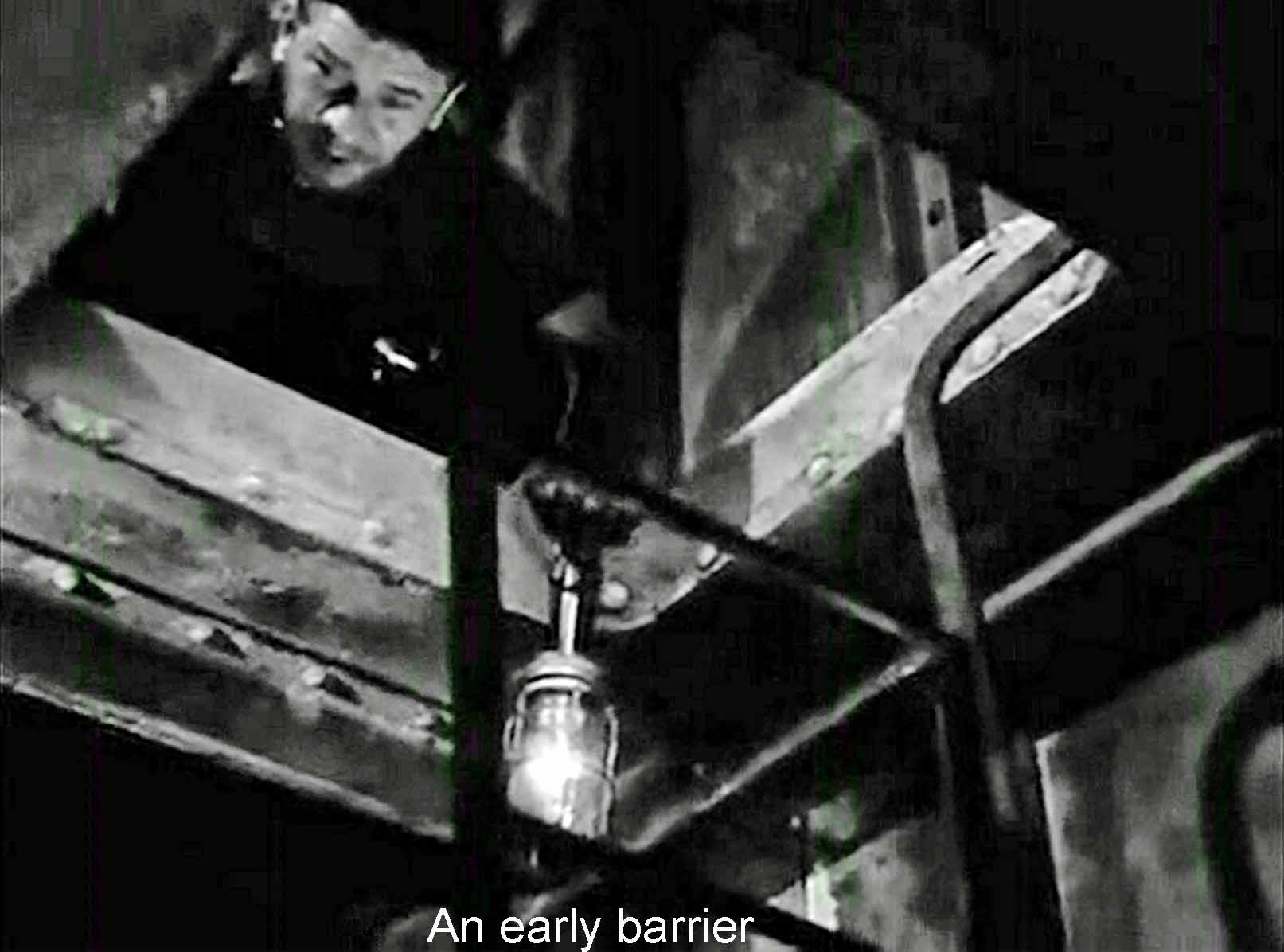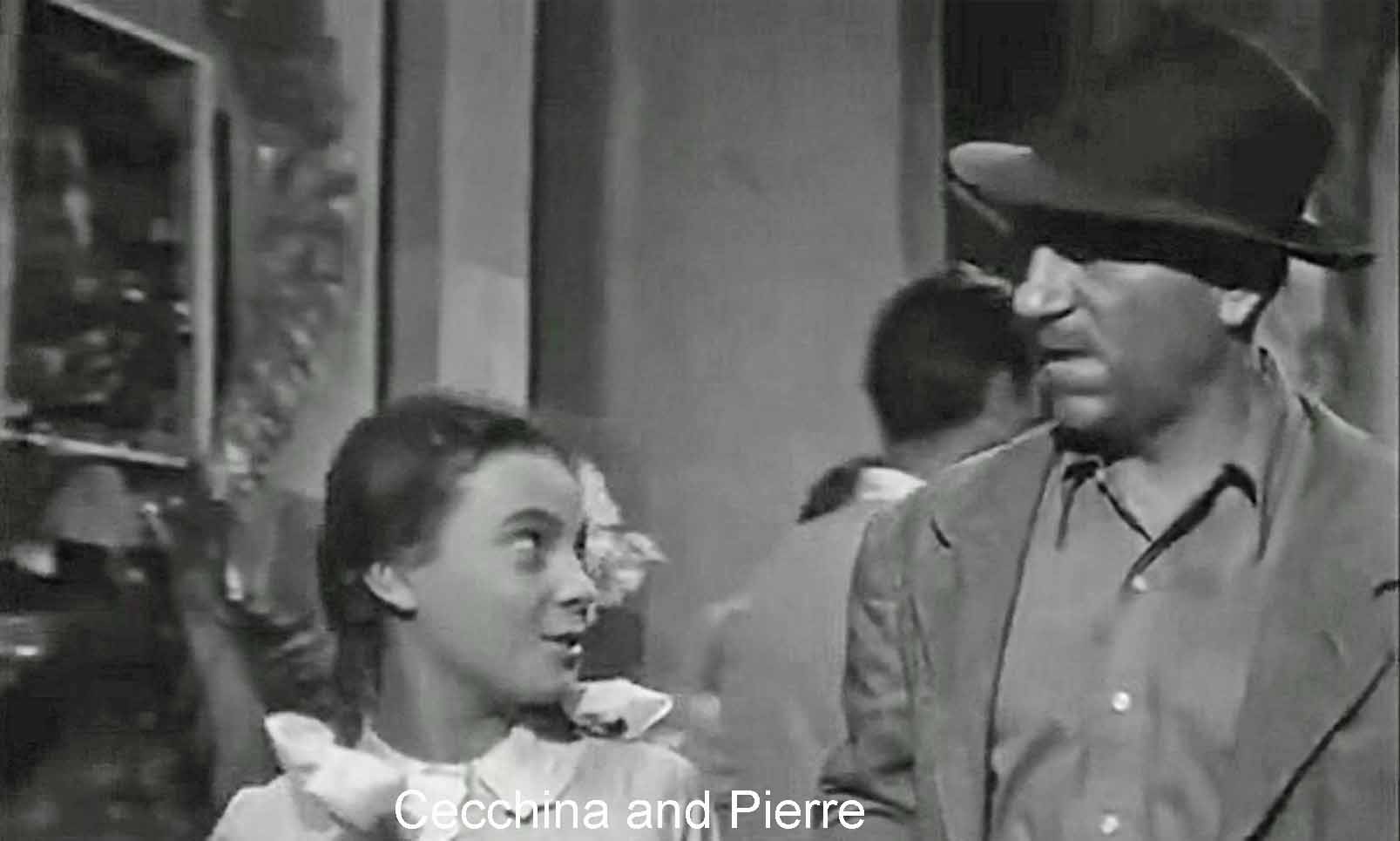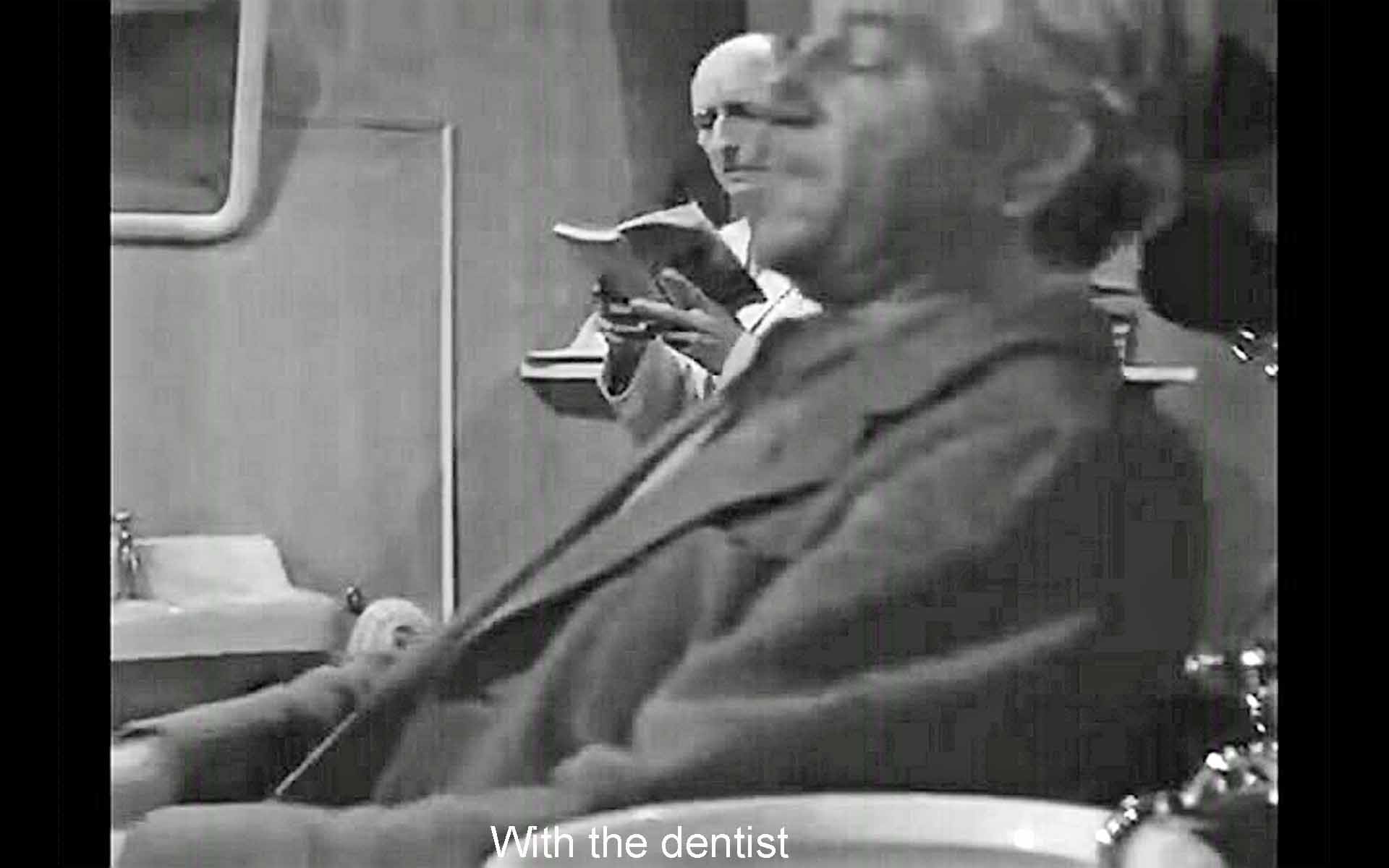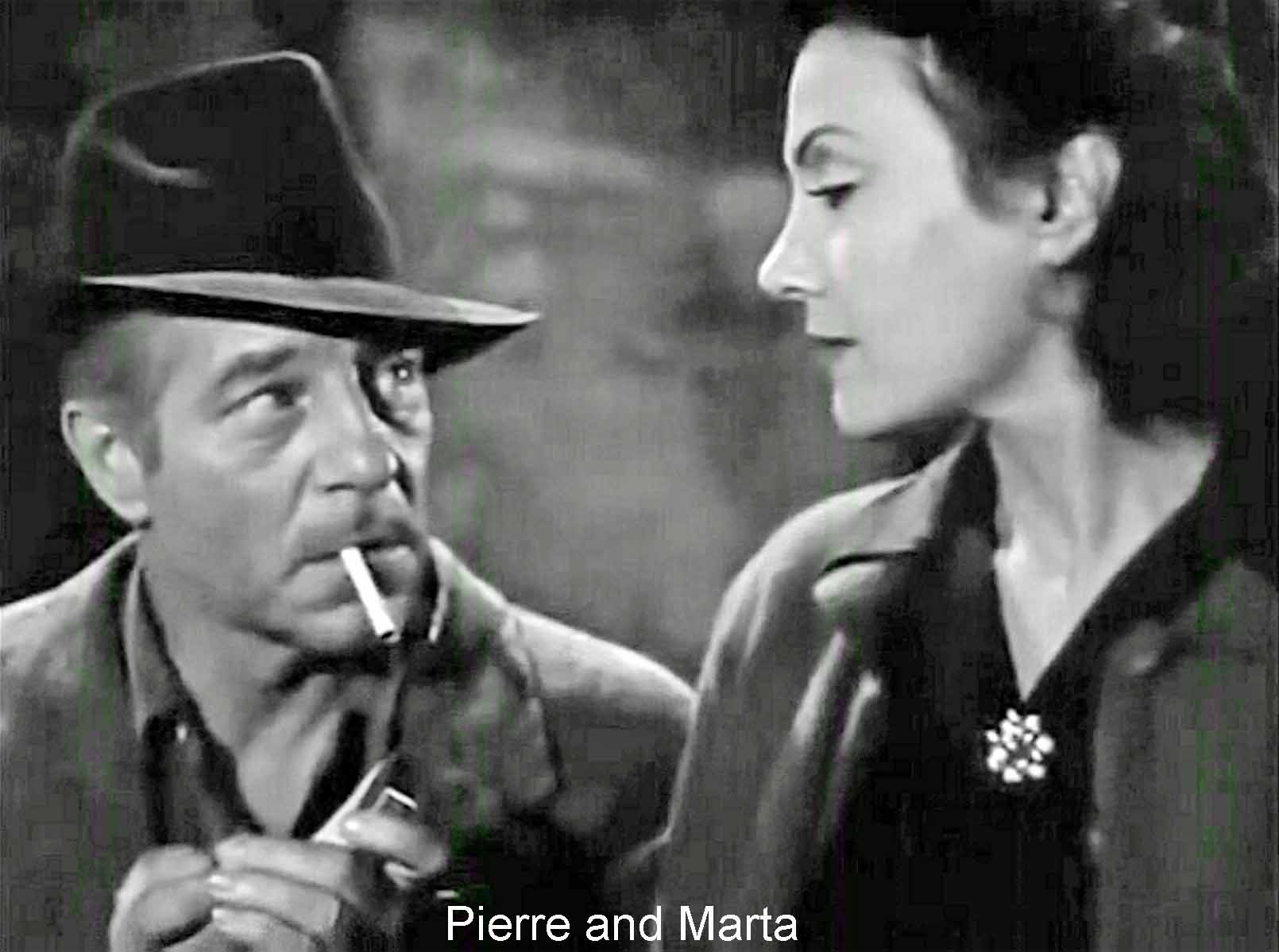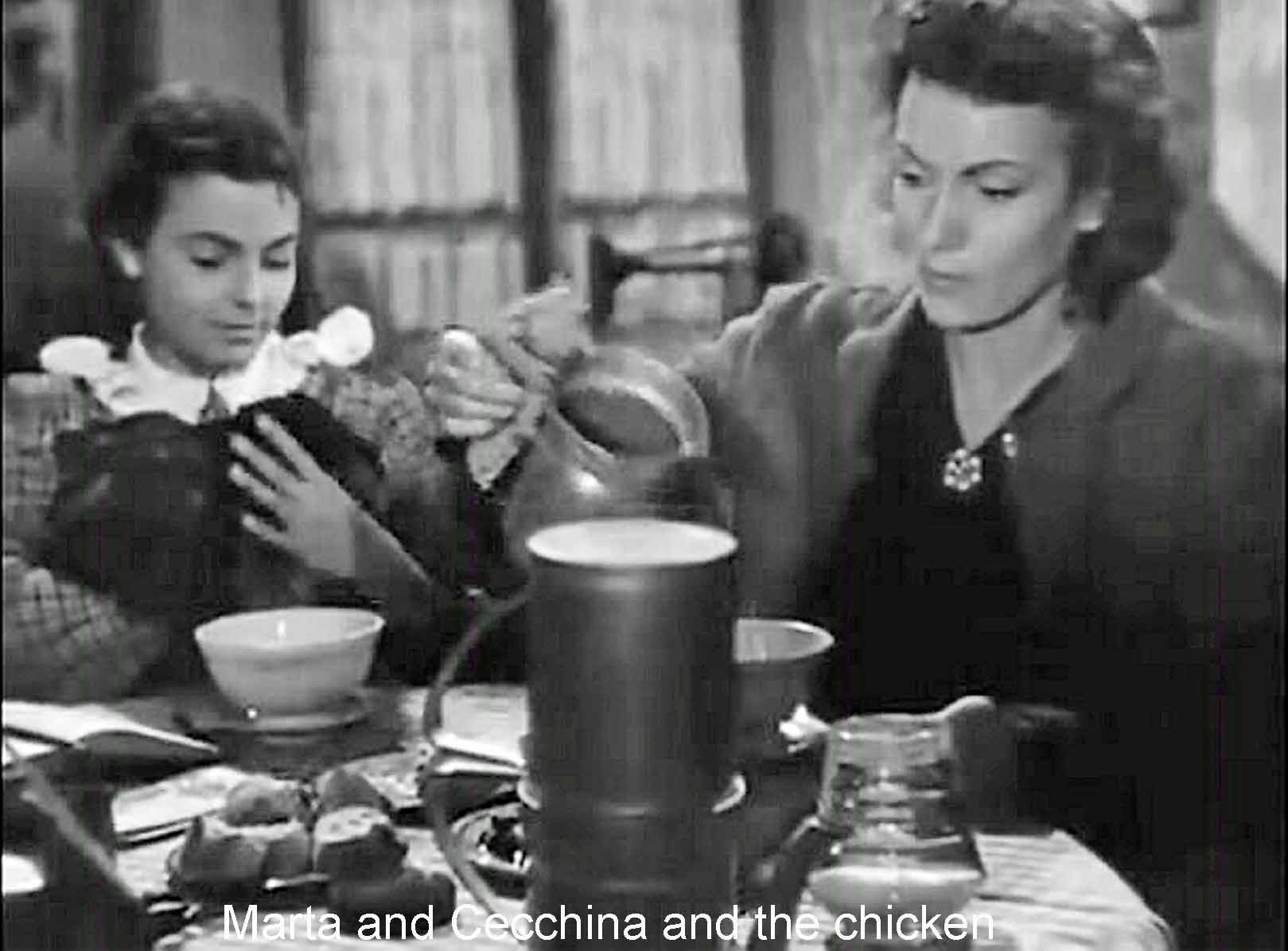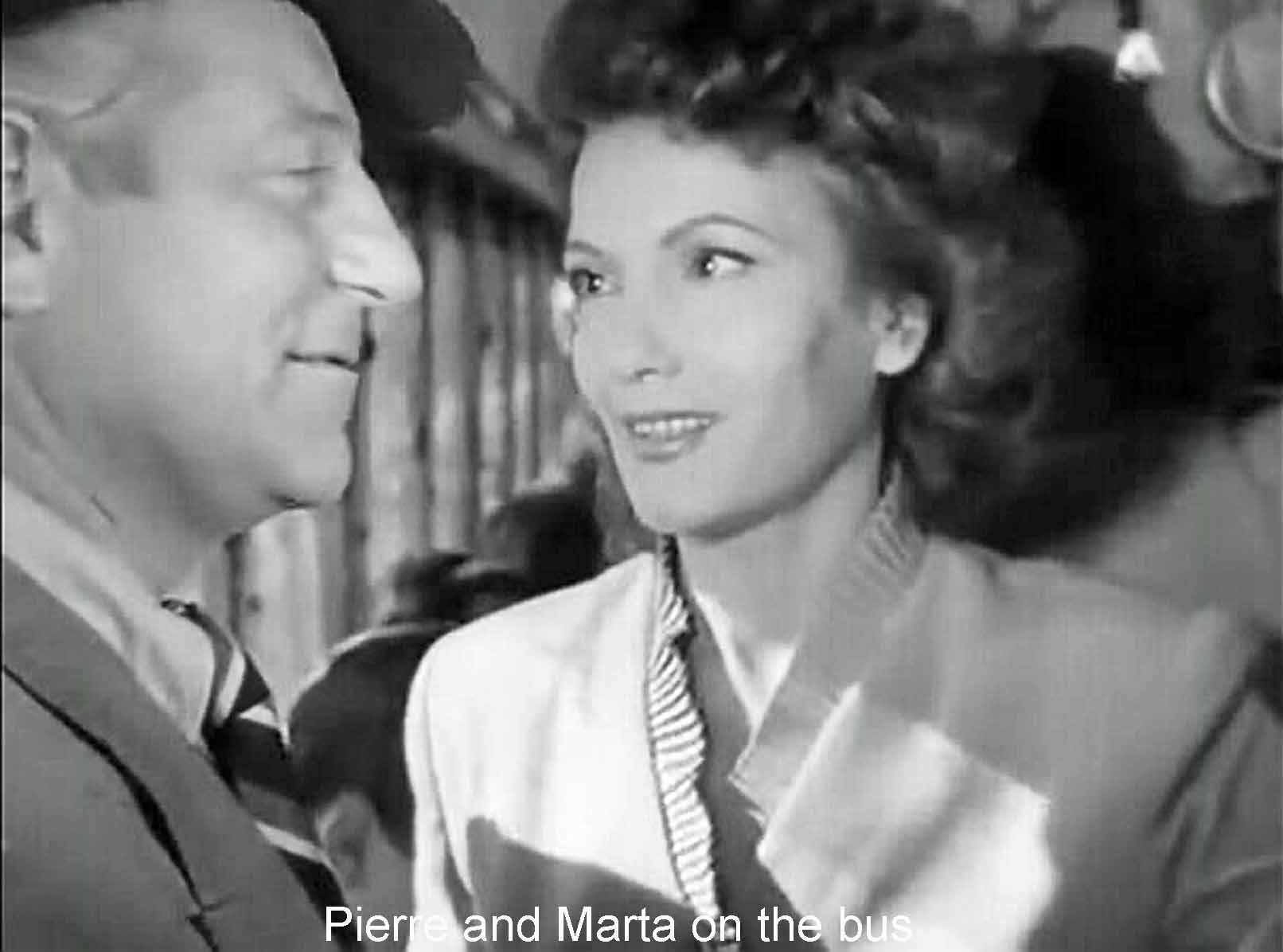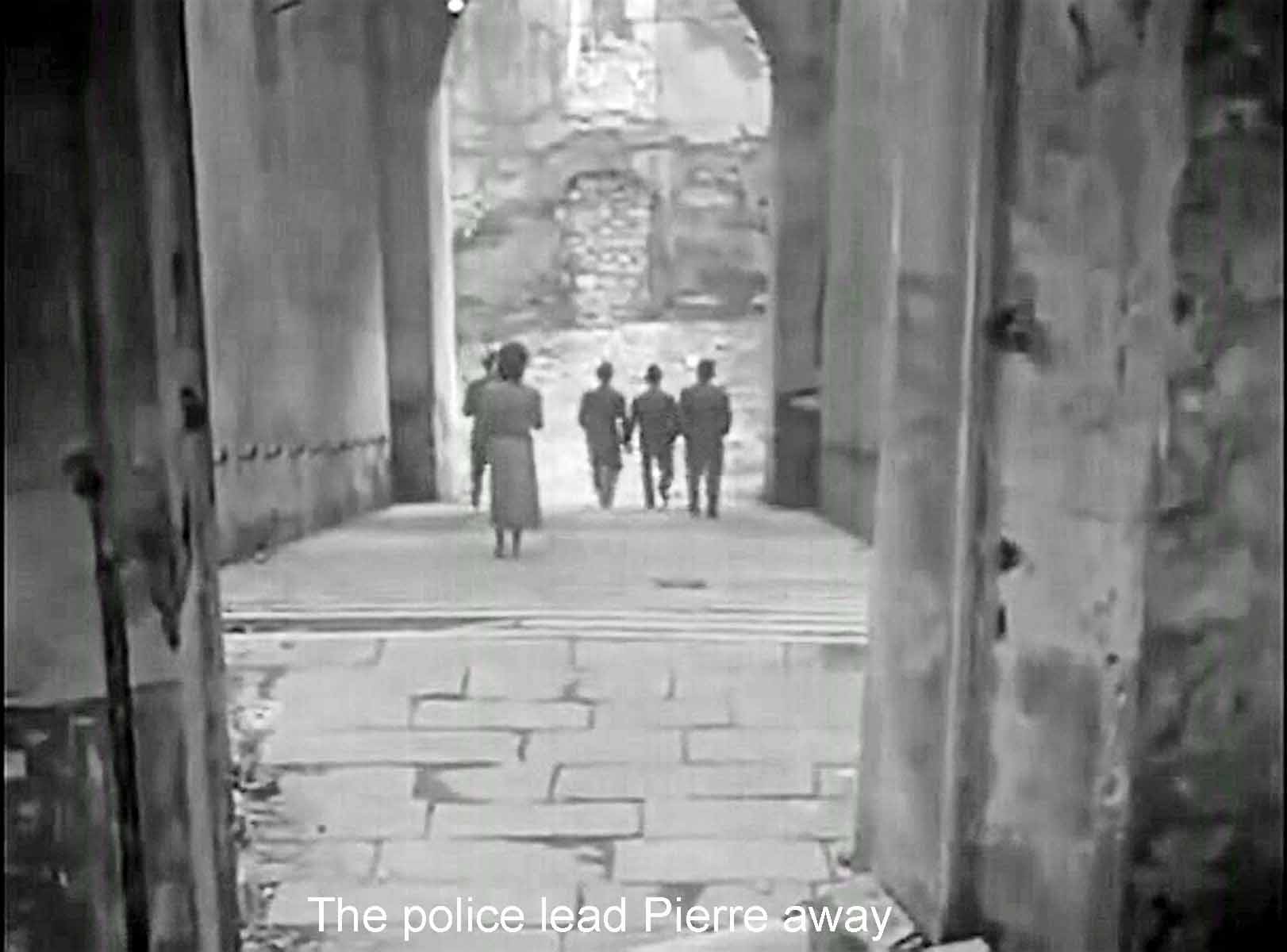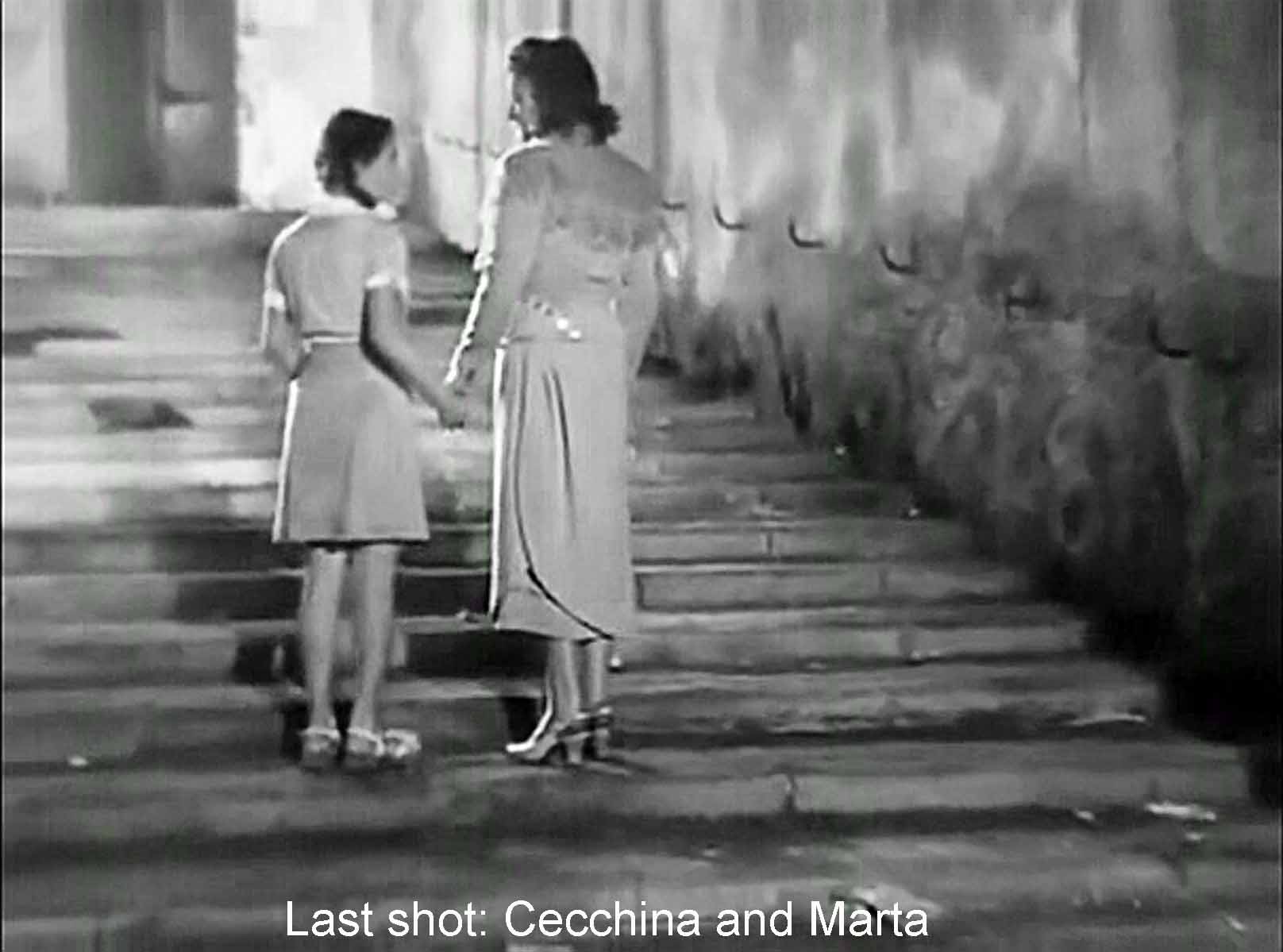A Franco-Italian production, this film has three titles: Au-delá les grilles (Beyond the Gates) and Le mura di Malapaga (The Walls of Malapaga). And every one of these titles tell us its theme: walls and gates —barriers.
Critics prize this film as an early example of film noir and an unusual combination of film noir with postwar neo-realism. We have the night scenes, the dark palette, the high camera angles, the underworld, above all the lover-hero who is also a murderer. At the same time, director René Clément used ingenious techniques to hide his camera so that he could photograph his actors acting against a background of ordinary Genoese citizens going about their business unaware that they were being used as unpaid extras in a movie. Certainly the street scenes were filmed this way, but that crowded bus? Surely that was a set and extras. But it all looks so realistic, it took me back to rush hour on the subway in New York.
Within these two styles, the film gives us instance after instance of barriers, especially barriers being crossed. The opening shot of the film is necessary to understand the second which starts the theme of barriers: a member of the crew on a ship opens a door and then a hatch to get to Pierre Arrignon, stowed away in the anchor room. The final shot of the film shows a mother and daughter climbing up steep stairs as the police lead Pierre down those stairs. They separate the lovers.
The mother is Marta (Isa Miranda); the daughter is Cecchina (Vera Talchi). Pierre (Jean Gabin) has to pass guards to get from the port into the city. There he meets various obstacles as he tries to find a dentist to pull the aching tooth that forced him ashore. Later he has to use Cecchina to get past the guards from the city to the port. Staying at Marta’s apartment, he sleeps in an attic with a floor and a trapdoor (and a chicken) separating him from Marta and Cecchina. Then there is the curious scene in which he and Marta stand at opposite ends of the room and repeat what he said the night before to see if Cecchina could have heard: space as a barrier.
The opening and the close show us physical barriers. Most of the barriers in the film are figurative: instances of breaking laws or customs. Pierre murdered his girlfriend back in France. He threatens the dentist (Renato Malavasi). The dentist pulls the tooth without getting paid for it. Marta, waitressing, accepts counterfeit bills when she knows she shouldn’t. Cecchina and the neighbors lie to the police about Pierre’s presence. Pierre and Marta have trouble trying to get next to each other on a crowded bus. They go to the seashore, but it consists of large rocks.
Why a chicken? Why is Cecchina’s pet a chicken? Why doesn’t she have an ordinary pet like the cat her friend Laura has? That’s not a question most film critics ask and certainly no reviewers. But if we want to see the film as a coherent work of art, it’s a question that demands to be asked, given the salience of that chicken. I’ll suggest that it’s the dual nature of the chicken. It’s both pet and food (as a neighbor of Marta’s reminds us). I’ve already said that I see this as a film about barriers and getting through barriers. The chicken cues me to think about barriers as having two sides. Why a toothache? Again, I think it’s the idea of a barrier, our teeth, with two sides. They chew food in; they keep other stuff out. (The Dragon’s Teeth Gate is a famous landmark in Singapore’s harbor.) The chicken and Pierre’s tooth cue me to think of these barriers as having two sides. So do the minor people in the film.
The crewman who confines Pierre also sets him free. The dentist pulls his tooth for free, but also helps the cops (and seems much more interested in his paperbacks than his patient). The street hustler and thief is a criminal who robs Pierre, but he is also the police informant who gets Pierre caught. Marta’s husband tries to kidnap Cecchina, but after he sees her and Cecchina protect Pierre, he glumly agrees to go back to France. The neighbors badmouth Marta and Pierre but refuse to turn them in to the cops.
The most obvious double-valued or two-sided figure is, of course, our hero Pierre. In the past he is a murderer. In the present and future he is a “loser” who is ready to accept Marta’s love and apparently become a permanent part of her life, although (another duality) he says and behaves as if he has no future. And he hasn’t. Marta herself faces two ways (Why isn’t this movie distributed by Janus Films?) Her past is her nasty and violent husband. Her future, her hoped-for future, is a life with Pierre and Cecchina.
Cecchina is the most complicated of these two-sided people. When she first meets Pierre and guides him to the dentist, she is enchanted. We’re not told why, but perhaps he reminds her of France where she had lived. When he becomes involved with her mother she is jealous and wants to send him on his way. Then when (as I read it) she sees he would make her mother (and herself) happy, she wants and tries to protect him from the police. Finally she climbs those fatal stairs holding hands with her mother, their original state restored. At the same time, Pierre, handcuffed, walks down those stairs with a shrug. The brief unity of Pierre and Marta has been split apart.
Several French critics identified in this film what they called “the Gabin myth.” That is, they said that all Jean Gabin’s previous pictures played variations on two themes: one, a dream of escape that never works out, and two, love or the hope of love that also fails. Both certainly occur in this film, but this film the critics identified as “the destruction of the Gabin myth.” In his earlier films, although everything collapsed, love (with a capital L) remained. Does that count in France for a happy ending? Anyway, here, the Gabin character never seems really committed to Marta. He may still love the woman he killed, hence his indifference. Maybe. At the end, taken by the police, aging, defeated, he walks off almost unconcernedly. He has lost all, even love with a capital L
In 1949, the industry took this film quite seriously. It got an honorary Oscar for Best Foreign Language Film (before that was an official category), and both Clément and Isa Miranda won awards at the 1949 Cannes Film Festival. But the film has scarcely survived in the DVD era. Even so, this film, despite its seemingly random plot, yields an idea that lets us read the various characters and episodes as an artistic whole: physical and emotional and legal barriers, gates, walls, doors, with two sides. And it offers film styles that were new and highly regarded in its day—and still in ours.
